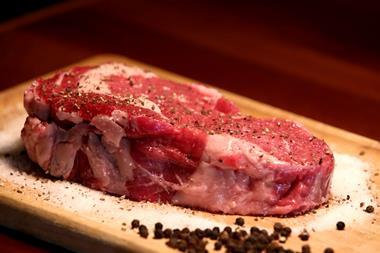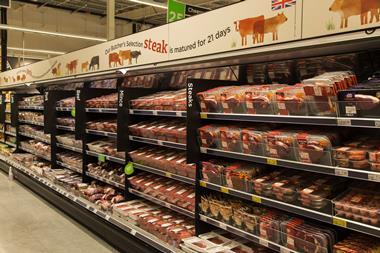
The British sheep sector could benefit from a £7m annual boost in revenues, AHDB has said, after US authorities ditched a three-decade-old ban on UK lamb.
Following September discussions between Boris Johnson and Joe Biden, the US Department of Agriculture (USDA) last week amended its ‘small ruminant rule’. This means that from 3 January, it will be possible to send British sheepmeat across the Atlantic for the first time since 1989, when restrictions were imposed in response to an outbreak of mad cow disease in the UK.
Also crossing the pond are trade secretary Anne-Marie Trevelyan and junior minister Penny Mordaunt. This week they will meet leading US officials, including trade representative Katherine Tai and commerce secretary Gina Raimondo, as the UK seeks to undertake “continued work towards a future free trade agreement” with the US, its biggest source of foreign investment.
The Department for International Trade said on Sunday that the visit “builds on recent successes in lifting US ban on British beef and lamb”. The US’ prohibition on British beef was lifted last year after almost a quarter of a century.
While the department has linked the lifting of the bans to government efforts to cajole the US into a sweeping post-Brexit trade deal, meat exporters and officials have been pushing the US to end the lamb veto since before the UK voted to leave the EU.
“We welcome the news that comes after well over a decade of effort by the UK government and levy boards,” said Peter Hardwick, trade policy advisor at the British Meat Processors’ Association.
Rhys Llywelyn, market development manager at Hybu Cig Cymru – Meat Promotion Wales (HCC), said: “Securing access to the US market for lamb has been a priority for the Welsh meat and livestock sector for many years, with HCC and Welsh government first raising the issue with the American authorities over a decade ago.”
AHDB estimates the soon-to-reopen US lamb market could be worth £37m “over the first five years of trade”, and was ”fantastic news for our sheep producers and exporters”, said AHDB international market development director Phil Hadley.
Britain’s total lamb exports are worth around £370m a year, according to the BMPA, with Hardwick saying that, over time, exports to the US could rise to around 10% of the total.
Although Americans eat far less lamb than Brits, with per-person consumption of around 0.5kg, around one-eighth that of the of UK, the government believes that could be in flux.
“The US market for lamb is growing as consumer trends change,” environment secretary George Eustice said on Friday. The government last month said it would send eight new food trade envoys to “key markets,” including the US, which the BMPA’s Hardwick said was “a very high value market and will be a good outlet for high-added-value cuts.”
The US gets most of its lamb imports from Australia and New Zealand, both of which recently agreed free trade deals with the UK that could see British lamb producers facing cut-price competition from abroad even as they look to restart exports to the US, where they will also compete against the same Antipodean suppliers.
According to AHDB, a dearth of high-quality cuts at home “is why the UK imports lamb from NZ and Australia in the form of legs, and exports whole or half carcases”, with the EU the main destination for the latter.
And if Australia’s fraught relationship with China deteriorates to the point that Beijing cuts market access for Australian lamb, the extra supply from down under “may undercut our domestic market”, according to a recent AHDB report.


















